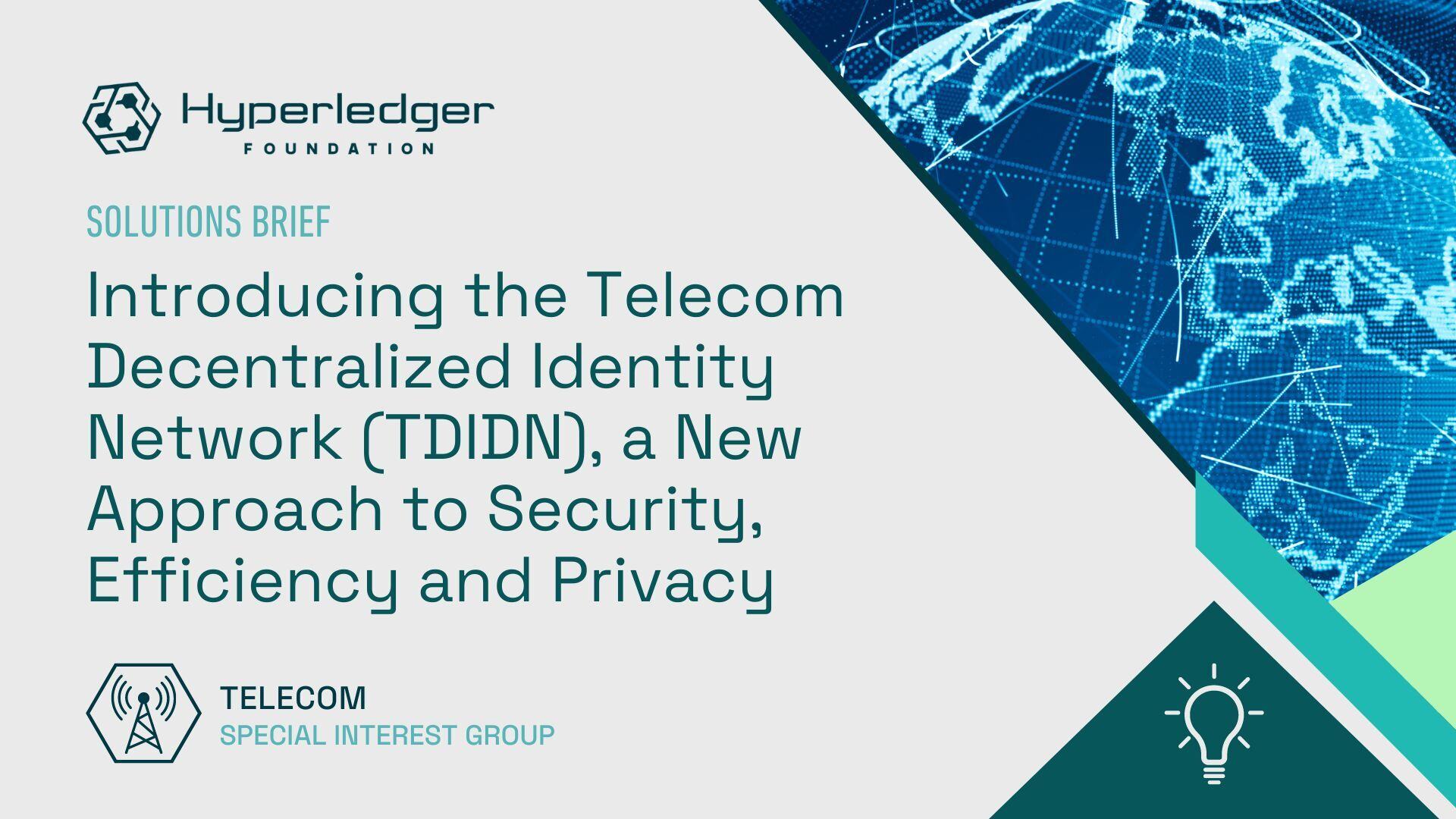Introducing the Telecom Decentralized Identity Network (TDIDN), a New Approach to Security, Efficiency and Privacy

This solution brief introduces the groundbreaking concept of a Telecom Decentralized Identity Network (TDIDN), a new way to improve identity management using decentralized identifiers (DID) and blockchain. This brief explores how TDIDN's innovative approach can improve security, efficiency, and privacy in telecom operations.
The solution brief includes an overview of the proposed architecture, a description of the process flow for four key functions, and a proposed user interface built for the MetaMask digital wallet.
TDIDN delivers a comprehensive architecture for implementing DIDs on a blockchain, through two related projects from the Hyperledger Foundation:
- Hyperledger Aries provides a complete toolkit for building decentralized identity solutions. Aries can issue, store and present verifiable credentials with maximum privacy, and establish confidential, ongoing communication channels for rich interactions.
- Hyperledger Indy supports digital identities rooted in blockchains that are interoperable across administrative domains, applications, and any other silo.
Hyperledger Aries provides the agent side of the decentralized identity application that reads and writes to the underlying DID blockchain provided by Indy.
Telecom Faces Many Challenges
Today’s telecom industry faces many pressing challenges, including:
- Security concerns, since telecom networks are juicy targets for criminals
- Admin overhead, with each operator maintaining siloed databases
- Privacy issues and a growing requirement for selective disclosure
- Lack of billing transparency leading to lengthy disputes between operators
- Weak authentication with user names & passwords or one-time passwords that can be attacked by spam or phishing
- Difficulties managing SLAs between operators that lead to disputes
All these challenges call for an innovative and comprehensive solution that reimagines the way identity management is conducted in the telecom sector.
The Solution: Using blockchain for decentralized identity
A Telecom Decentralized Identity Network (TDIDN) can meet all these challenges by providing a modern and secure decentralized network that uses decentralized identifiers (DID) and blockchain technology to revolutionize identity management for telecom.
Here are six use cases where the TDIDN approach can solve challenges for the telecom industry:
Enhancing security with decentralized ID
TDIDN introduces DIDs as a secure and decentralized identity solution that are more convenient and more secure.
Reducing overhead with smart contracts
A blockchain stores the International Mobile Equipment Identity (IMEI) number for a device, along with its owner and status. This eliminates the need for each telecom to maintain its own unique registry, reducing overhead and boosting transparency.
Protecting privacy
TDIDN empowers users with selective disclosure, so that customers no longer have to disclose their entire identity for every transaction. This promotes privacy and minimizes the risk of unauthorized access to personal data.
Making billing more transparent
TDIDN enables telecom operators to store Call Detail Records (CDRs) on a blockchain network using decentralized identifiers (DID). Smart contracts automatically validate each CDR against the terms of the related SLA to ensure accurate and transparent billing, automated in a secure and cost-effective way.
Strengthening authentication
TDIDN replaces One-Time Passports with DIDs for a more secure and user-friendly alternative. This streamlines authentication, enhances the user experience, and reduces spam phone calls and SMSs.
Managing SLAs with smart contracts
Smart contracts encode all the terms and conditions of an SLA. The SLAs are stored and executed on a decentralized network that ensures transparency, immutability, and cost-effective automation.
Together, all these use cases show the many ways in which the proposed TDIDN architecture can solve the pressing needs of the telecom industry.
More details are provided in the full white paper, which is available to download here.
_______________________________________
Get Involved with the Hyperledger Telecom SIG
To learn more about the Hyperledger Telecom SIG, check out the group’s wiki and mailing list. If you have questions, comments or suggestions, feel free to post messages to the list. And you’re welcome to join any of the group’s upcoming calls to meet group members and learn how to get involved.
Acknowledgements
The Hyperledger Telecom Special Interest Group would like to thank the following people who contributed to this solution brief: David Boswell, Dinkar Jain, and Vipin Rathi.
Sign up for Hyperledger Horizon & /dev/weekly newsletters
By signing up, you acknowledge that your information is subject to The Linux Foundation's Privacy Policy